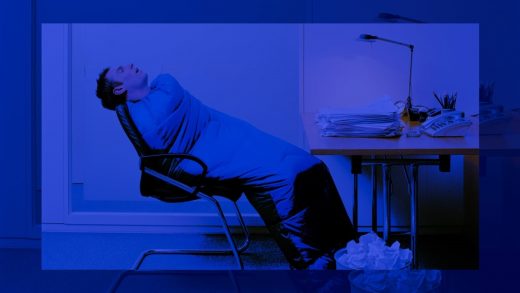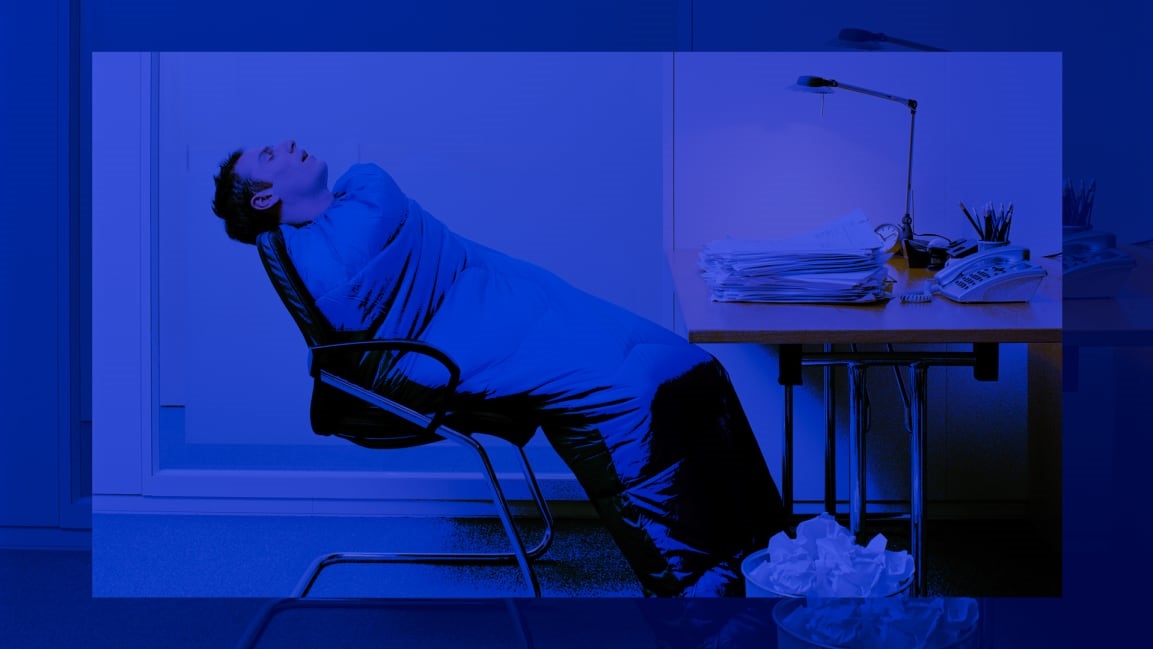The business case for napping at work
I’m well overdue to confess a dirty little secret about my career: I’ve long and often committed an unspeakable act. I’ve slept on the job. Literally. As in napped.
Napping while on the clock was once regarded as strictly taboo, a stigma hard to live down. Nowhere was this attitude more deeply rooted than in the U.S., where we pride ourselves on getting by on less sleep than people in other countries if only to boost our national GDP.
Indeed, chronobiologist Dr. Charles Czeisler coined the term “sleep machismo” in a 2006 article in the Harvard Business Review to reflect how corporate warriors and entrepreneurs alike routinely resist sleeping enough in the belief that it’s just a waste of time.
I fell prey to this gung-ho perception of nappers as slackers back in the 1970s, much to my shame today. I would routinely spot an otherwise valued colleague three offices down the hall nodding off slumped at his desk and snoring away. I frowned on this practice as clear proof of laziness.
But no sooner had I judged my coworker thus harshly than I formed exactly the same habit. Freelancing from home as a thirtysomething through the 1980s afforded me the luxury of conking out almost daily with impunity.
Later, sharing an office in downtown Manhattan with a colleague, I likewise followed my circadian rhythms. I would resort to catching a break on a park bench near City Hall. I then took a job in a suburban office park that required a 50-mile commute by car. My own office could have served for respite, except that my boss insisted on an open-door policy that would have exposed my napping to my officemates. So occasionally at lunchtime, I would slip out to my car in the nearby garage and doze away in my reclining front seat.
Eventually I took a senior position in a global company that enabled me to lock my office door at will. There, I treated myself to catnaps on the sly with no one the wiser, much less suspicious about my long-term commitment to the bottom line. No loss of profit ensued. Despite these secret retreats, I ultimately received promotions, raises, and even awards.
Other Americans are evidently snoozing along with me, by the way. According to a survey from the Better Sleep Council, 22% of employed Americans—and 31% of those who work remotely—report taking naps during business hours. And telecommuters are twice as likely to take a siesta in the middle of the workday as their in-office counterparts.
No wonder this is so. Trauma from the pandemic has taken a toll, research shows, undermining the quality of our sleep at night— sometimes leading to nightmares and insomnia—and increased our need for shut-eye during the day. Plus, with more Americans telecommuting, access to beds and sofas is now easy.
I’ve telecommuted for the past 13 years. And my rationale for napping in the comfort and privacy of my own home remains highly strategic: I do so to perform better. Always I’m up at first light, performing my most demanding work in the morning. Post-lunch, I willingly surrender to the tyranny of grogginess and go lights out for about a half hour.
Invariably I wake with a second wind, refreshed enough to be more efficient and productive than if I had gone napless. Every day feels almost like two days. Besides, if the ritual of catnapping was good enough for geniuses such as Leonardo da Vinci, Benjamin Franklin, Albert Einstein, and Thomas Edison, it’s good enough for me.
The science supporting the physical and psychological benefits of a midafternoon nap is by now well established. Your heartbeat and breathing slow, your muscles relax. You in effect press a reset button, giving your day a new start and avoiding burnout.
But naps can do more than improve your physical health. Research suggests they can also sharpen your concentration, perceptions, mood, memory, and creativity. In that sense, naps can be good for business, lowering absenteeism, on-the-job errors, and healthcare costs.
Accordingly, corporate attitudes have slowly shifted direction. Nobody has designated a chief nap officer just yet. Nor are any executives resorting to out-of-office messages that admit they’re currently napping. But sacking out in some quarters is increasingly an approved business model, practically a matter of company policy. Nike, Proctor & Gamble, Facebook, Ben and Jerry’s, and Zappos have built and designated rooms for naps. Google’s offices famously installed actual sleep pods, complete with high-tech beds and built-in sound systems.
As chance would have it, I recently relocated to Italy, where a midday siesta—sometimes called a pisolino—is the norm. Each afternoon, offices, markets, and restaurants close for two or three hours. So now I’m officially off the hook. I nap Italian-style, giving in to biology, free of guilt and finally in sync with the national culture.
Let’s face it: Napping on the job is overdue to be rebranded. The business case for crashing out on our couch before the next Zoom call to perform better is unmistakable. Bosses everywhere should consider this reality nothing less than a long-overdue wake-up call.
Bob Brody is a consultant and essayist, and the author of Playing Catch with Strangers: A Family Guy (Reluctantly) Comes of Age.
Fast Company , Read Full Story
(22)



